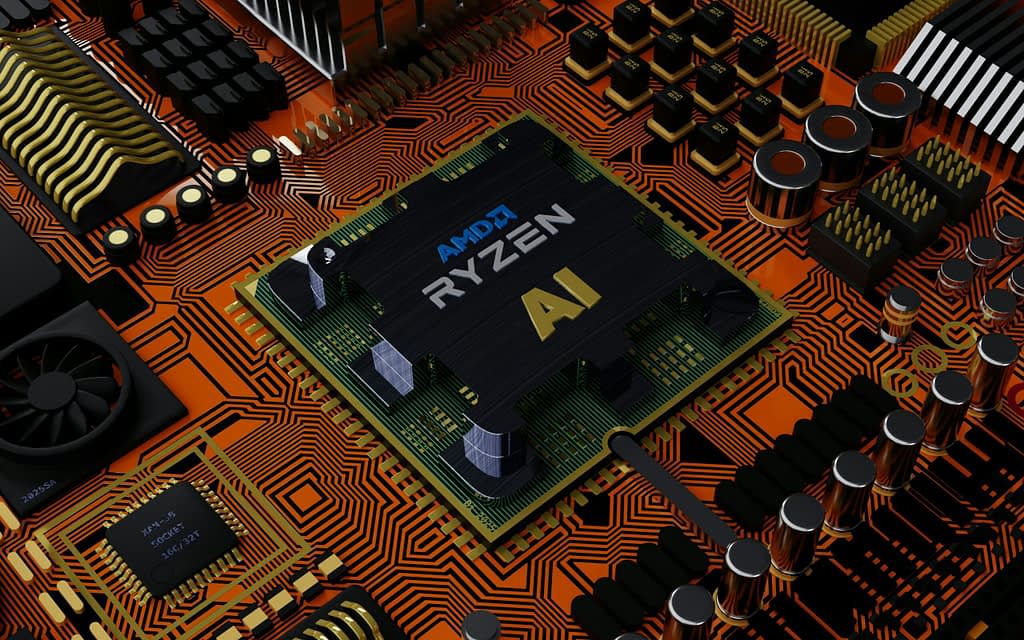Advanced Micro Devices (AMD) enters the year with an aggressive strategy in the artificial intelligence market. CEO Lisa Su unveiled revolutionary AI processors MI355, which according to the company are up to 35 times faster than previous generations and can compete with top-tier Nvidia chips at significantly lower prices. This announcement could fundamentally reshape dynamics in the most lucrative segment of the technology industry.
How AMD is Revolutionizing AI Accelerators in Data Centers
The new processors from the MI350 series represent a major breakthrough in AI accelerators. AMD claims that MI355 chips outperform competing Nvidia B200 and GB200 products when running AI software and offer comparable or superior performance in code creation. The company simultaneously promises dramatic reduction in total AI infrastructure costs.
Key advantages of the new processors include:
- Performance leap: 35x higher speed compared to predecessors
- Price competitiveness: Significantly lower cost than comparable Nvidia chips
- AI optimization: Specifically designed for developing and operating artificial intelligence tools
- Supply availability: First units began shipping early this month
Why the AI Technology Market is Exploding Toward $500 Billion
Lisa Su originally estimated that revenue in the AI accelerator segment would reach $500 billion by 2028. Now, however, she expects this threshold to be exceeded due to rapid demand growth. “People used to think that $500 billion was a huge number. Now it seems within reach,” she said after the presentation.
Rising investments by the world’s largest companies in AI infrastructure have driven advanced chip prices to tens of thousands of dollars per unit. Companies like Microsoft, Google, and Meta invest tens of billions annually in AI data centers. Demand consistently outstrips supply, creating opportunities for alternative suppliers like AMD.
AMD’s Strategic Position in the Processor Market
For AMD, the AI accelerator segment represents a path to escape the shadow of longtime rival Intel in personal computer processors. While AMD generates billions of dollars from AI accelerators, Nvidia achieves over $100 billion annually. This enormous gap motivates AMD toward a more aggressive strategy.
Investor sentiment, however, remains cautious. AMD shares fell 2.2% to $118.50 after the presentation, wiping out modest gains for the year. Analysts point out that promising performance and actual market realization are two different things.
Which AI Processors Will Dominate in 2026
Su also previewed what’s coming next, including the follow-up MI400 series hitting the market next year. These processors will feature:
- Greater memory capacity for demanding AI applications
- Faster data access – a key feature for AI software operation
- Collaboration with OpenAI in specification development
- Technological leadership over then-available Nvidia products
OpenAI CEO Sam Altman, who joined the presentation, called the original MI400 specifications “incredible.” He emphasized that computing infrastructure demands have surged this year as AI transformed from a curiosity into a tool with real business value.
Geopolitical Challenges of Export Policy
A key question remains AMD’s ability to sell AI chips at greater scale. Like Nvidia, AMD faces US trade restrictions preventing shipment of the most powerful components to China.
AMD is intensively lobbying the Trump administration for greater freedom in exporting AI products to other countries. The company argues that restrictions harm American competitiveness in the global market. A recent deal in Saudi Arabia was concluded only after consultation with Washington. According to Su, greater export freedom is crucial for keeping American technologies at the center of global AI system development and ensuring long-term US dominance in this field.




